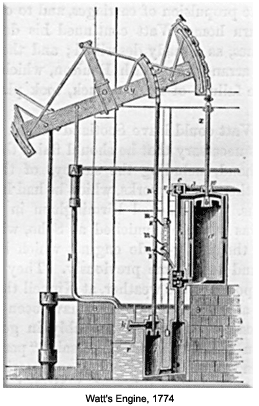The First Industrial Revolution began in England in the late 18th century, following in the wake of James Watt and his steam engine. (A Second Industrial Revolution would occur late in the 19th century and involve the development of the steel industry and giant corporations.)
 The initial focus of industrialization was on textiles; cloth was needed by almost everyone. Early textiles were produced by a “cottage industry” (or “putting-out”) system in which a central agent, the factor, would provide raw cotton and oversee the work of the various production units. Individual families, usually farm wives and daughters, would master one part of the process—spinning, dyeing, weaving and so forth.
This decentralized means of production would become obsolete through the actions of such people as Samuel Slater and Francis Cabot Lowell.
At the London Exhibition of 1851, although organized to showcase the advances of British science and technology, American industrial successes were for the first time placed on the international stage. A reaper produced by Cyrus McCormick was awarded the Grand Medal and the Council Medal after a demonstration. Charles Goodyear, discoverer of vulcanization, received a medal for some of his applications of rubber.
The initial focus of industrialization was on textiles; cloth was needed by almost everyone. Early textiles were produced by a “cottage industry” (or “putting-out”) system in which a central agent, the factor, would provide raw cotton and oversee the work of the various production units. Individual families, usually farm wives and daughters, would master one part of the process—spinning, dyeing, weaving and so forth.
This decentralized means of production would become obsolete through the actions of such people as Samuel Slater and Francis Cabot Lowell.
At the London Exhibition of 1851, although organized to showcase the advances of British science and technology, American industrial successes were for the first time placed on the international stage. A reaper produced by Cyrus McCormick was awarded the Grand Medal and the Council Medal after a demonstration. Charles Goodyear, discoverer of vulcanization, received a medal for some of his applications of rubber.